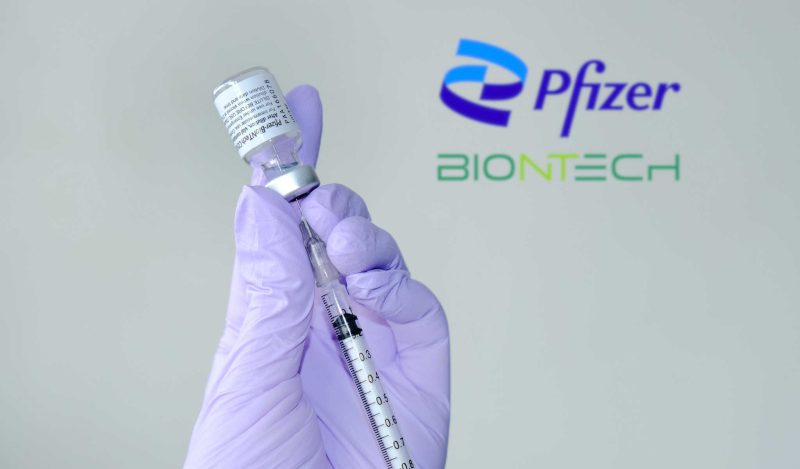The bizarre Project Veritas “sting” videos that have gone ultra-viral on Twitter have undoubtedly confused the public even more. But the actual developer and owner of the so-called “Pfizer” Covid-19 vaccine is the German company BioNTech. The underlying mRNA technology belongs to BioNTech and – supposing this has been happening at all – if any company has been modifying mRNA to encode for a homebrewed variant of the virus, it would have to be BioNTech.
Be that as it may, as discussed in my last article, although BioNTech CEO Ugur Sahin claims in the book The Vaccine that BioNTech launched its Covid-19 vaccine project on January 27, 2020, we know this is not true: a BioNTech study report released in response to an FOIA request shows that the company had already in fact begun preclinical (animal) testing on January 14.
This is already astonishing enough, since January 14, 2020 was only 2 weeks after the first report of Covid-19 cases in Wuhan. On that very day, moreover, the WHO was saying that there was no “clear evidence” of human-to-human transmission. (See WHO tweet here.) Why in the world would BioNTech begin work on a Covid-19 vaccine without clear evidence of human-to-human transmission?
At this point, Pfizer was not part of BioNTech’s C-19 vaccine project. As narrated in The Vaccine, the small German company, which had never had any product on the market, only succeeded in recruiting the American multinational as partner three months later (p. 156).
So, we know that BioNTech began preclinical testing on January 14. But, of course, this means that the project as such must have been launched even earlier. The formulation being tested had to be produced first. In this case, that meant first manufacturing the mRNA and then formulating it in lipid nanoparticles.
As touched upon in my last article, this was in fact the purpose of the study: to test the performance of BioNTech mRNA formulated in lipids made by the Canadian company Acuitas. BioNTech was not yet able to manufacture mRNA encoding for any element of the SARS-CoV-2 virus – the full genome had only been published the day before – and instead used mRNA encoding for a proxy antigen (luciferase).
So how long would it take to get the formulation ready for testing? Thankfully, Sahin’s book, which is coauthored by his wife Özlem Türeci and the journalist Joe Miller, provides relevant technical and logistical details. According to the book, manufacturing the mRNA – a process involving “tens of thousands of steps” (p. 182) – takes five days (pp. 170 and 171).
Five days brings us then to January 9. But the mRNA had still to be wrapped in the lipids, and this involved a particular logistical problem: BioNTech could not do this itself at its headquarters in Mainz, Germany.
BioNTech had its own in-house lipids, but they were found not suitable for purpose. To get the mRNA wrapped in the Acuitas lipids, the mRNA had to be shipped to an Austrian subcontractor by the name of Polymun outside Vienna.
The mRNA was transported by car – an 8-hour drive, according to Sahin and Türeci – then formulated in the lipids by Polymun, and then the formulation was driven back to Mainz. In the book, Sahin and Türeci describe a batch of mRNA for a subsequent animal study being completed on March 2, being shipped to Polymun, and then returning to Mainz wrapped in the lipids on March 9 (pp. 116 and 123).
So, this adds another 5 days, which would bring us now to January 4. But, as it so happens, BioNTech did not conduct the animal testing itself. This too was subcontracted and conducted at testing facilities elsewhere. In The Vaccine, Sahin and Türeci note that the later preclinical study began on March 11, 2 days after delivery of the lipid-encapsulated mRNA.
Adding another 2 days to our timeline brings us now to January 2. January 2, 2020 was not two weeks, but merely two days after the first report of Covid-19 cases in Wuhan on December 31, 2019.
But before it could be manufactured, needless to say, the formulation to be tested had first to be conceived and designed; and contact had to be made with Polymun and Acuitas to obtain the required permissions and arrange for the required collaboration. All of this takes time.
There is no avoiding the conclusion that BioNTech’s Covid-19 vaccine project must in fact have started before any Covid-19 cases had even been reported! The obvious question is: How is this possible?
Join the conversation:


Published under a Creative Commons Attribution 4.0 International License
For reprints, please set the canonical link back to the original Brownstone Institute Article and Author.









